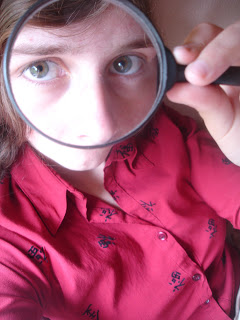I rewatched Transformers this weekend, a movie I haven’t seen in a while. In the middle of the movie, I ran into a scene I almost forgot about. Then I watched it and I remembered seeing it for the first time–not just seeing it, but sitting there and going “What? No way! How can they possibly expect me to buy that?”
This may seem like an odd thing to say in the middle of a movie about living robots that like to hide in plain sight as cars, but that’s the thing about suspension of disbelief. It has limits.
 Now, before I pick on this scene in detail, I have to say that I like this movie. Which is probably one of the reasons this scene bugged me so much.
Now, before I pick on this scene in detail, I have to say that I like this movie. Which is probably one of the reasons this scene bugged me so much.
For those who haven’t seen the movie, the story establishes that giant transformable robots exist and that they’re searching for a giant cube that has the power to turn anything mechanical into one of their kind. Or destroy all life as we know it. You know, as giant cubes tend to do. They set this up as true, and I’m fine with that. Cool. Giant robots and the All Spark. Got it. And the story is set on Earth as we know it now. No problem.
Within this world that they’ve built, there are rules that we accept. We also accept that the humans follow the rules we know. Those rules collapsed completely when the blonde computer analyst working for the government managed to copy and sneak out a top secret file and bring it to her computer hacker friend. This friend, by some stroke of luck, has an alien language decryption program in his computer or something because as soon as he plugs in the SD card, he not only knows the signal’s strength, he can see the code hidden in the file and read part of what they downloaded from the government.
Umm… what?
An entire room of the best technical minds the government could acquire and equipment more powerful and advanced than anything available in the commercial sector couldn’t break this code. Couldn’t even figure out what the code was. But some hacker kid puts the information into his computer and BOOM! SOLVED! No time lapse, no growing pile of coffee cups as he struggles through the night to crack the impossible code, no work AT ALL. Just done. Solved.
That moment bugged the hell out of me. I couldn’t buy it. Even in a world of giant robots, you can’t expect me to believe that one kid cracks in two seconds what an entire room of brilliant people couldn’t. Especially when he barely demonstrates any level of exceptional intelligence through the rest of the film. The blonde girl, however, is obviously a near-genius. She comes up with the brilliant ideas and she should have been the one to find some way to crack the code, but she wasn’t. She took it to the comic relief and let him do it.
At this point I could easily turn this into a post about taking away an important moment from a strong, intelligent female character, but I’ll save that for later.
The point of this post is this: no matter how entertaining or well-written the rest of the story, shattering the audience’s suspension of disbelief for even a moment can ruin everything. What do I always remember most about the first Transformers movie? That stupid hacker scene. Also, explosions. But mostly the hacker scene.
It’s why world building and consistency and listening to beta readers is so important. It’s why it’s worth it to take the time to dig into your world and figure out how everything works. What are the rules of your society and what technology is available to them? What are people capable of? Figure it out, establish it, and stick with it. If you do this, readers (or viewers) will stick with you. If not, you may end up with a lot of people shaking their heads and walking away muttering, “You have got to be kidding me.”






